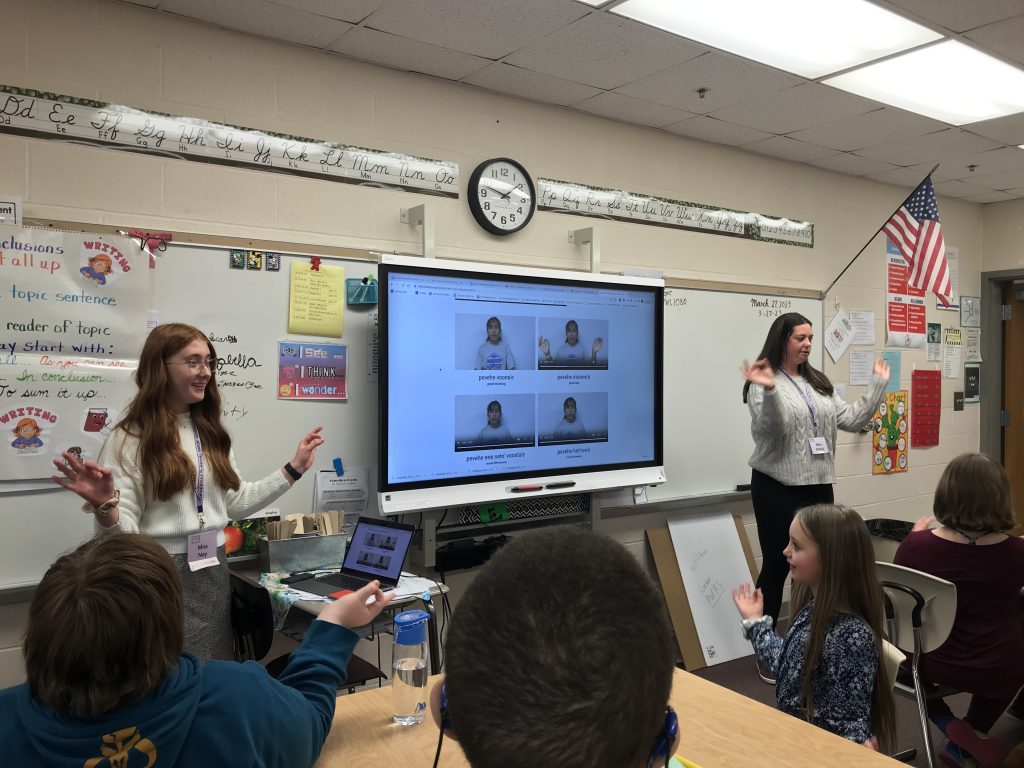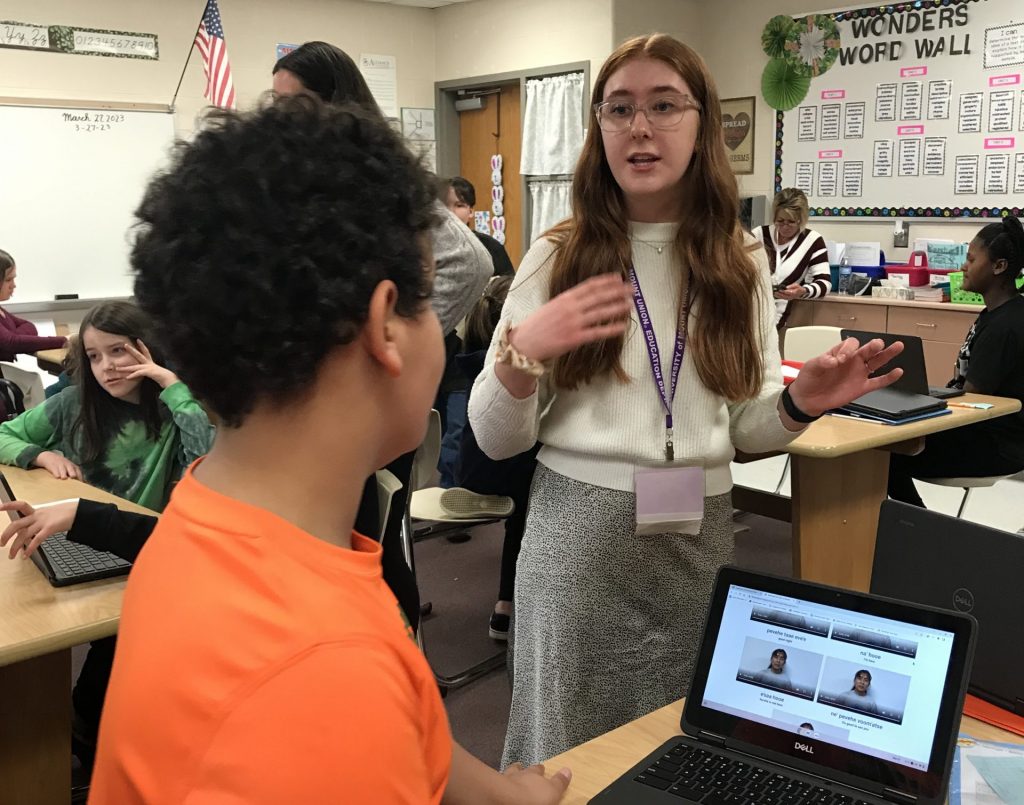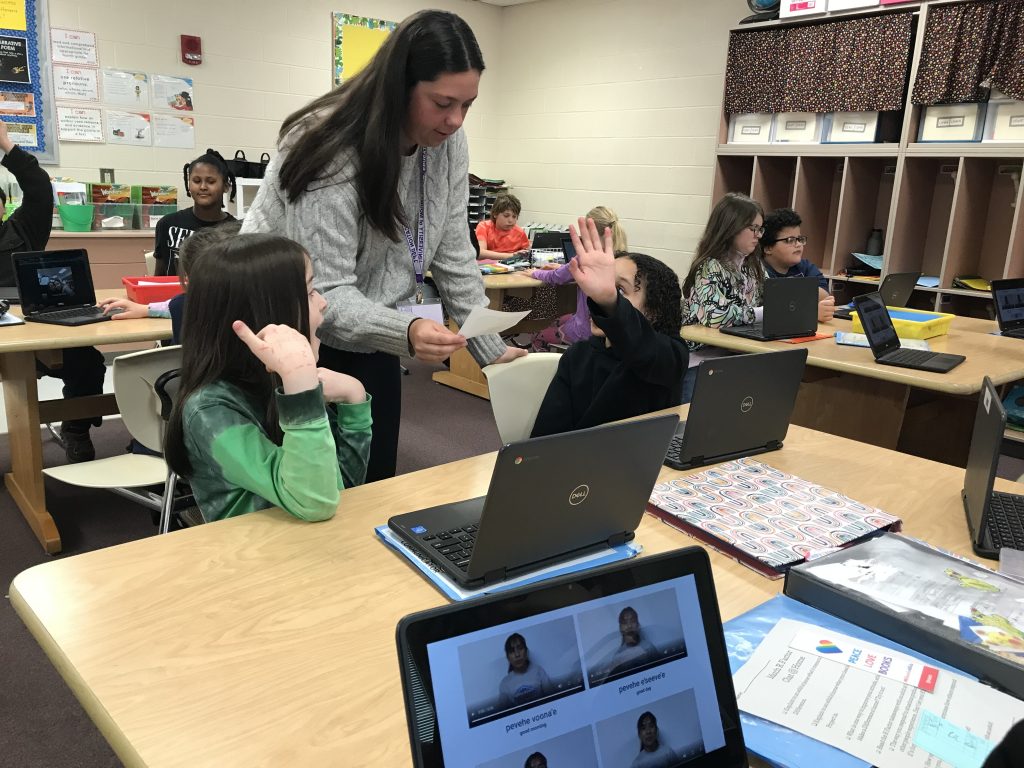


A Role Play Lesson Exploring American Sign Language and Northern Cheyenne Sign Language as Examples of Culture
Northern Cheyenne Language
Main resource used in this lesson plan from ahtove.org
Lesson Plan
A Role Play Lesson Exploring American Sign Language and Northern Cheyenne Sign Language as Examples of Culture
Authors: Ally Nittoli & Bailee Nay – Consultant/Editor: Dr. Mary Beth Henning (henninma@mountunion.edu)
Grade Level: 4th/5th
Subject: Native American Culture/Sign Language
Context for Teaching/Learning:
This lesson was taught to 26 fourth grade students at Alliance Intermediate School in Alliance, Ohio in the classroom of veteran teacher, Lorie Ann Osco. The class included 15 girls and 11 boys, one student with a 504 plan, and six students with an IEP plan. The IEPs focus on word & sound recognition, reading fluency, comprehension, and writing meaningful sentences. One student with hearing issues sits toward the front of the room and can see the board well. The children in this 4th grade class have articulated that they prefer working together rather than alone. Student groups are assigned to have at least one typical reader. The classroom is set up with 8 tables seating 3 to 4 students each facing each other for easy communication.
This fourth-grade class has already been exposed to some Native American history and culture, so we are expanding on their knowledge. This lesson uses the Ahtove.org website to teach Cheyenne sign language and spurs students to create a role play to show their understanding of Cheyenne sign language. This engaging lesson creates an understanding of different cultures in numerous ways.
To be most effective, teachers should review the sign language on ahtove.org as well as a few basic American Sign Language (ASL) signs. This lesson was written and taught by team teachers, but it can be taught by one teacher alone.
This lesson builds on John Dewey’s ideas of learning by doing to create a conceptual understanding of language and culture. Learning is formed through concrete experiences, observation, and reflection, forming abstract concepts, and testing in new situations. In this lesson, the students get to interact with one another through roleplay.
